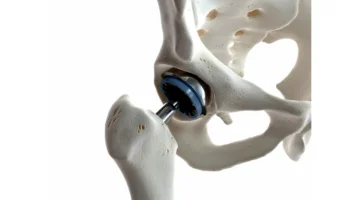Differences Between a Chiropractor and an Orthopedist
Did you know that over 22 million Americans visit chiropractors each year? If you’re considering seeking care for musculoskeletal issues, understanding the differences between a chiropractor and an orthopedist is crucial.
While both professions focus on treating conditions of the musculoskeletal system, their approaches, education, and scope of practice differ. In this article, we’ll explore the contrasting aspects of these two fields to help you make an informed decision about your healthcare needs.
Key Takeaways
- Chiropractors complete four years of undergraduate education and then a Doctor of Chiropractic degree, while orthopedists complete four years of undergraduate education, four years of medical school, and a five-year residency program in orthopedic surgery.
- Chiropractors focus on manual adjustments and spinal manipulations, while orthopedists primarily specialize in surgical interventions for musculoskeletal conditions.
- Chiropractors emphasize holistic and non-invasive techniques, while orthopedists often employ a combination of medical interventions.
- Both chiropractic care and orthopedics can treat conditions such as back pain, neck pain, joint pain, muscle strains, herniated discs, and arthritis.
Education and Training Requirements
You’ll need to meet different education and training requirements to become a chiropractor or an orthopedist.
To become a chiropractor, you’ll need to complete four years of undergraduate education, followed by a Doctor of Chiropractic (D.C.) degree from an accredited chiropractic college. This typically takes four years of full-time study.
On the other hand, to become an orthopedist, you’ll need to complete four years of undergraduate education, followed by four years of medical school. After that, you’ll need to complete a five-year residency program in orthopedic surgery.
Scope of Practice
Typically, chiropractic care frequently focus on the musculoskeletal system and use manual adjustments to treat patients, while orthopedic care primarily specialize in surgical interventions for musculoskeletal conditions.
Chiropractic care often use their hands to manipulate the spine and other joints to improve alignment and relieve pain. They may also recommend exercises, stretches, and lifestyle modifications.
On the other hand, orthopedic doctors are trained orthopedic surgeons who diagnose, treat, and prevent musculoskeletal injuries and conditions through surgical interventions, such as joint replacements or repairs.
Treatment Approaches
For treatment approaches, both a orthopedic doctors and chiropractors have their own unique methods and approaches to addressing musculoskeletal issues.
Chiropractors primarily use manual adjustments and spinal manipulations to mobilize the spine and promote proper functioning of the nervous system. Sports chiropractors may also utilize soft-tissue treatments such as dry needling, IASTM, or cupping to improve range of motion, decrease pain, or improve compensation patterns.
On the other hand, orthopedists focus on surgical interventions, medications, physical therapy, and other non-surgical treatments to manage musculoskeletal conditions.
While chiropractors emphasize holistic and non-invasive techniques, orthopedists often employ a combination of invasive medical interventions to treat their patients, such as surgery, injections, and medications.
Conditions Treated
When considering conditions treated, both a chiropractors and orthopedic doctors can help alleviate various musculoskeletal issues. Here are three common conditions that both professionals can address:
- Back pain: Both chiropractors and orthopedists are trained to diagnose and treat back pain, which can be caused by muscle strains, herniated discs, scoliosis, or spinal dysfunction.
- Neck pain: Whether it’s due to poor posture, whiplash, or degenerative conditions, both chiropractors and orthopedists can provide relief for neck pain.
- Joint pain: From arthritis to sports injuries, both chiropractors and orthopedists can offer treatments to help manage joint pain and improve mobility.
Collaborative Care and Referrals
You can benefit from collaborative care and referrals between a chiropractor and an orthopedic doctors, as they work together to provide comprehensive treatment for your musculoskeletal issues.
Chiropractic care focuses on spinal adjustments and non-invasive techniques, while orthopedists specialize in surgical interventions and complex musculoskeletal conditions.
When necessary, chiropractors may refer you to an orthopedist for further evaluation or treatment.
This collaborative approach ensures that you receive the most appropriate care tailored to your specific needs.
Conclusion
So, now that you know the differences between a chiropractor and an orthopedist, which one would you choose for your specific needs?
Both professions have their unique specialties and approaches to treatment. Whether you prefer a hands-on approach or a more comprehensive medical approach, it’s important to consider your individual circumstances and consult with the appropriate healthcare professional.
Most patients find it best to start with a chiropractic specialist and if needed, pursue orthopedic medical attention.
So, who’ll you trust to help you on your journey to better health?





